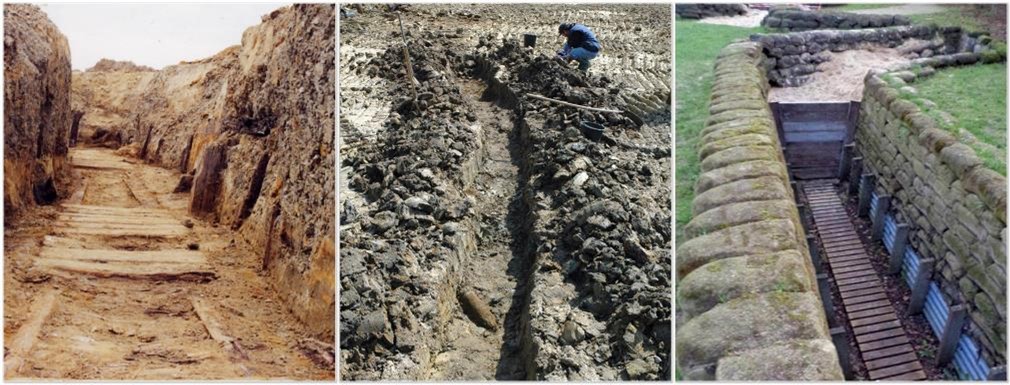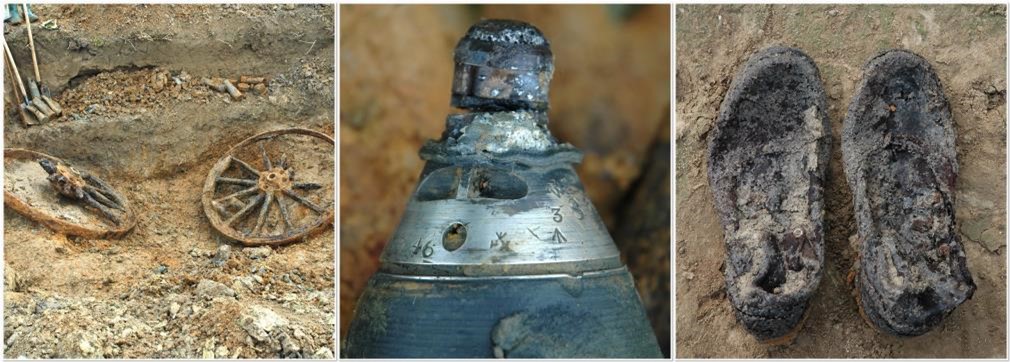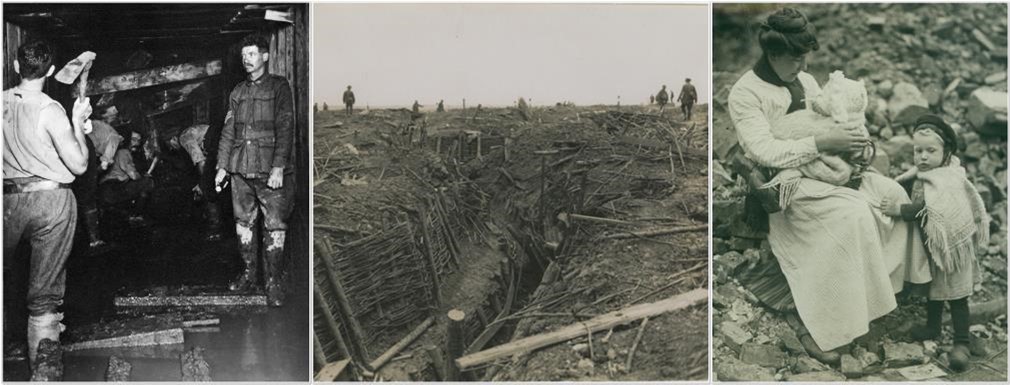Over a century ago, Ypres in Belgium was the main theatre of trench warfare on the Western Front, where millions of men from the Allies and Central Powers were wounded, killed or declared missing during the First World War.
Today it’s the city of peace, the harrowing sound of conflict but a distant memory. The barren battlefields have since been replaced by thriving industrial estates, the historic buildings that were destroyed by bombs have been rebuilt.
But in this tranquil Belgian city, the remembrance of the Great War will always live on in its many monuments and museums paying homage to the sacrifice of those who died so that we might live. One of these memorials is the Yorkshire Trench.

In that trench, based in the middle of an industrial estate not far from Essex Farm Cemetery where John McRae penned his famous In Flanders Field poem, the remains of over 150 forgotten soldiers were found nearly 30 years ago.
Many of them hailed from towns and cities across Yorkshire. We don’t know them all – only one could be identified – but we owe them all for their gallant bravery.
For the last three decades, the site has been one of fascinating military interest to visitors from across the world. But now the battle is on to save the Yorkshire Trench from impending collapse, with recently retired army reservist, John Morrison, from Leeds, leading the charge.
What is the Yorkshire Trench?
The Yorkshire Trench is one of a very few WWI front line trenches that still exist in its original position.

It is thought the trench was initially dug by French soldiers in 1915. Maintenance of the trench was then taken over by the 49th West Riding Infantry Division, mainly soldiers from Sheffield, Leeds, Huddersfield and Halifax, who had been posted to the ‘quieter’ Ypres Salient after previous campaigns at the Somme, Pozieres and Flers-Courcelette. Then came the brutal Passchendaele offensive which sustained a catastrophic number of casualties.
The 49th occupied the trench until the end of the war in 1918. After that, it was lost for many years under a sea of brambles. That was until development of an industrial estate on the site in the early ‘90s uncovered human remains and team of archaeologists were drafted in to inspect.
Originally, they found remains of 155 soldiers from British, French, German and Belgian troops. Only one of those could be identified, a French soldier called Francois Metzinge, whose metal dog tag hadn’t disintegrated. Most of the remains were thought to be from men aged between 18 and 25, which corresponds with the number of young men who conscripted voluntarily in WWI.
After deciphering this was indeed the site of the former British front line, the trench was recreated at the turn of the millennium, with volunteers rebuilding the trench as the soldiers would have done almost 100 years before using sandbags and duckboards. They also found a bunker from 1917 in pristine condition which has not seen daylight in 80 years.
“The trench is really narrow and claustrophobic, only a few hundred metres long. But it’s like a time capsule. It’s such an amazing place to visit and we want the public to be able to visit again. Standing water was a real problem in the war and still is today, which is what has caused the trench to disintegrate.”

John has built a good rapport with the team at Flanders Museum who were instrumental in securing the trench and have invested around €30,000 of their money into saving it. However, John is now crowdfunding to raise an additional £100,000 to preserve and restore the trench again to prevent it from crumbling into the history books.
John joined the army after leaving school, working as a senior storeman and regimental catering warrant officer with the Yorkshire Officers’ Training Regiment at Carlton Barracks. Following 44 years’ service, in which time he did tours of Iraq and Bosnia, John retired in April.
“My school was the exact same as one from the film, Kes. I liked art and history, but neither of those were a career opportunity I had at 15. We had a careers advisor whose only question was ‘what does ya dad do?’ If he was a bricklayer, that’s what you’d do. My dad and his seven brothers were all in the army, so naturally that was the route I took. My two sons are also in the reserves; James, who is currently on an op in Estonia, and Joe who is helping me with the campaign along with another young man called Wesley.”
During his time with the YOTR, John has taken reservist recruits from Sheffield and Leeds universities on trips across Europe to learn about the realities of war, focusing on areas relevant to the two Yorkshire cities. Along with visits to see where troops landed in Normandy, the holocaust memorial in Germany, or cemeteries in Tunisia, recruits have also enjoyed fascinating visits to Belgium to see the Yorkshire trench up close.
“We do a telegram on each soldier and follow their journey throughout the trip. Then the cadets open the envelope at the end to see if they made it or not.”

A large part of the trips focuses on the social history of war, particularly women’s involvement on the domestic front.
“I’m not bothered about the romantic idea of warfare or collecting badges and medals. I’m interested in the diaries and photos that tell stories of real people’s lives – what they did before or after the war, what they ate or how they adapted to civvy life.
“Women’s involvement is often airbrushed from military history, but we look at how women coped with raising families on rations, how being separated from their children who had been evacuated. Most people know women worked in factories and hospitals, but many don’t realise women were drafted in to fly aircraft without any ammunition, or that they couldn’t even own a potato peeler or lipstick.”
The Yorkshire Trench bears a stark reminder of the conditions that soldiers lived and fought in for our freedom. We can never repay their sacrifice, but your donations to the campaign will help preserve their legacy for many years to come.
How to support the Yorkshire Trench
The race is on to raise a further £100,000 to prevent the Yorkshire Trench from imminent collapse due to ground conditions and standing water. You can support John’s campaign by donating here: www.justgiving.com/crowdfunding/yorkshiretrench
They also have a Facebook page and YouTube channel which are updates regularly with information about the trench, as well as trench cooking videos by John.






